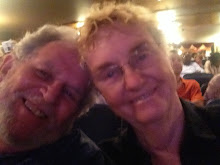
Placed like gems in a cobalt sea, more than 426 Rock islands lie in a 23-mile long lagoon between Koror and Peleliu. Remnants of ancient uplifted coral reefs, undercut by the persistent action of waves, and draped with dark greenhouse foliage, the Rock Islands are Palau’s premier visitor attraction. Beneath the surface of the sea dazzling coral gardens teem with iridescent fish, and underwater cliffs drop thousands of feet in the horizontal distance of a few paces. The picture below shows about 70 of the 426 Rock islands.

Palau is considered to be one of the prime diving sites in the entire world. Across Micronesia, however, Yap and Chuuk are rivals for that claim. Yap is home to the manta rays, and Chuuk has the remainder of the Japanese fleet in the bottom of its lagoon. Divers can’t go far wrong if they include all three sites on their trip to the Western Pacific.
Babeldaob is Palau’s version of Hawai‘i’s ‘big island’. Babeldaob is a land of fertile volcanic hills criss-crossed with rivers. The second largest landmass in Micronesia after Guam, Babeldaob is 27 miles long and 15 miles across. In 2006, the new national Capitol was officially opened in Melekeok State. Access to the capitol and much of Babeldaob is now possible via the road paid for through the US-Palau Compact Agreement. The new national Capitol rivals Washington DC in terms of the size and grandeur of the Legislative, Judicial, and Executive wings of the Capitol buildings.

The main road in Koror and all the way to the State capital is wide, smooth, and newly built. After the driving experience on Chuuk, it was certainly as pleasure to navigate along Palau’s modern, well-drained highway.
A trip to Palau wouldn’t be complete for us without a trip to the ocean-side bar where the film crew from the TV reality show “Survivor Palau” went after a day of filming, and where the crew of the Hokule‘u mounted the giant oar from their canoe at the conclusion of the westward leg of their trip across the Pacific. In the picture below, the banner of the TV show can be seen above Sandra’s head, and the long handle of the oar is lashed to the rafter, perpendicular to and just to the left of the banner.
Education on Palau is a thriving venture. Though schools look much the same as the ones on Chuuk, Palauan schools are better equipped and the teachers receive lots of training and support from the local board of education. The buildings are open on both sides of the classroom, and the children wear uniforms much like schools across all of Micronesia.
G. B. Harris, the school pictured above is on Koror. The school pictured below is on the island of Peleliu. As can be seen in the photograph, the school was built in 1945. It is said construction began the day World War II ended. The people of Peleliu were motivated to quickly rebuild their island which was the site of one of the most devastating battles of WWII, one in which 30 000 soldiers lost their lives, 25 000 Japanese and 5 000 Allied troops.
The people started the rebuilding process with the school, and today it is a modern symbol of the prominence that Palauans give to education. The grade four children in the picture below are doing arithmetic. The class was well equipped, materials were plentiful, and the children were engaged and enthusiastic about their work.
Sleepy eyed we said ‘sulang’ to the independent Republic of Palau as we boarded the 1 am flight bound for Yap, a 45 minute short hop to the fourth and final FSM state on our trip. Getting from Palau or Yap back to Guam is an energy sapping experience. The only flights are at 1 am out of Palau, for the 45 minutes flight to Yap. Then around 3:30 am, the flight continues from Yap onto Guam arriving there at 5:00 am. The schedule is this way in order to accommodate Palaun and Yapesse people to catch a connecting flight to Honolulu that departs from Guam at 7 am. By arranging the schedule in that way, people on these two remote islands do not have to spend money on a hotel on Guam waiting for the early morning flight to Hawai‘i. It all makes sense, but it sure plays hell with one's body!





Another great couple of entries about the center of the world ( from the local point of view) I was intrigued by the carvings and especially the story boards. I wonder if there is a printmaking aspect to this traditional art. They are so close to being able to take woodcut prints off these flat wooden carvings. I am studying Paul Gauguin these days and am about to follow in his footsteps in making some woodcut prints of my own. See my blog http://gardheim.blogspot.com Looking forward to Guam.
ReplyDeleteAs always an excellent posting.The
ReplyDeleteway you write is awesome.Thanks. Adding more information will be more useful.
Bathmate